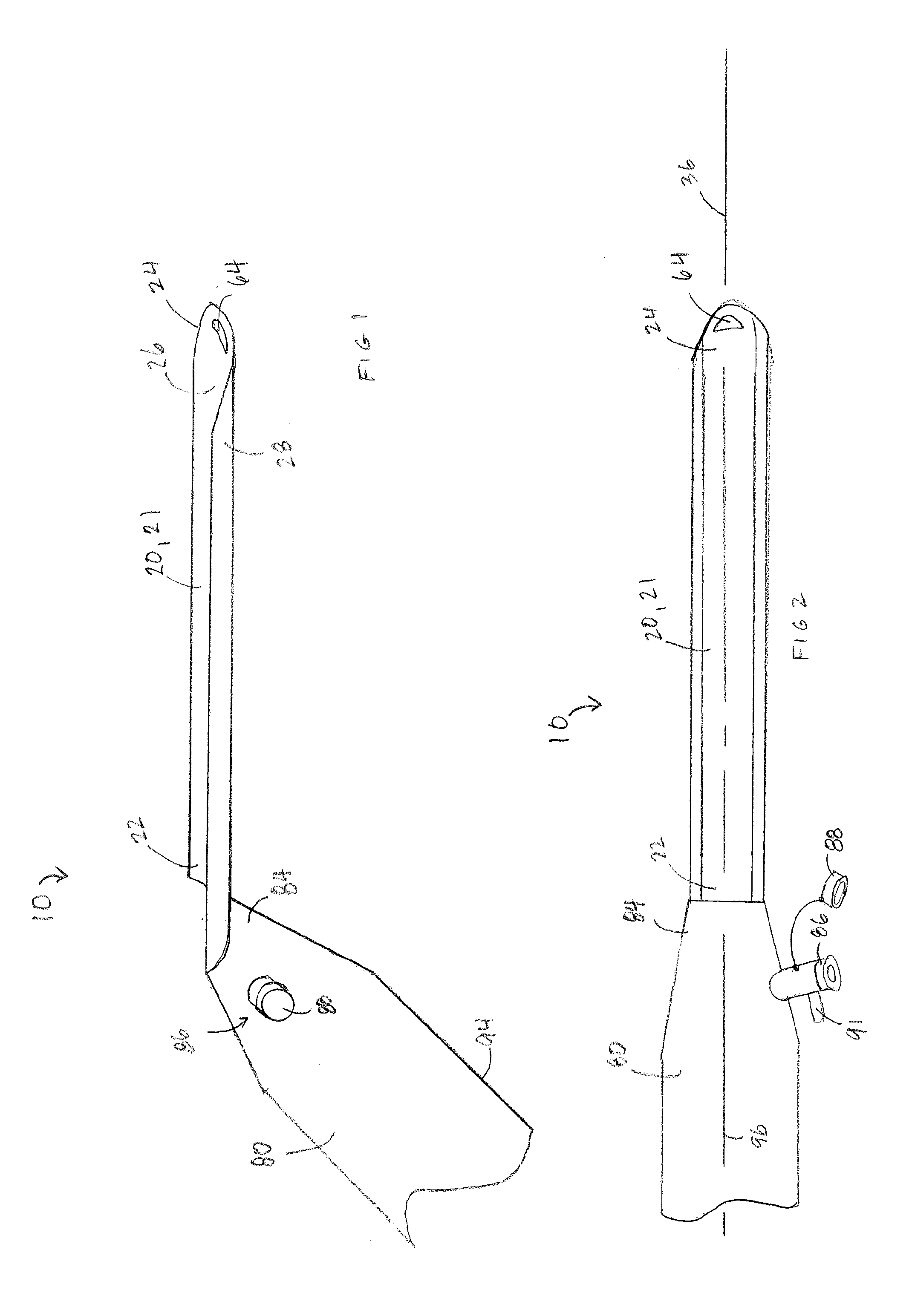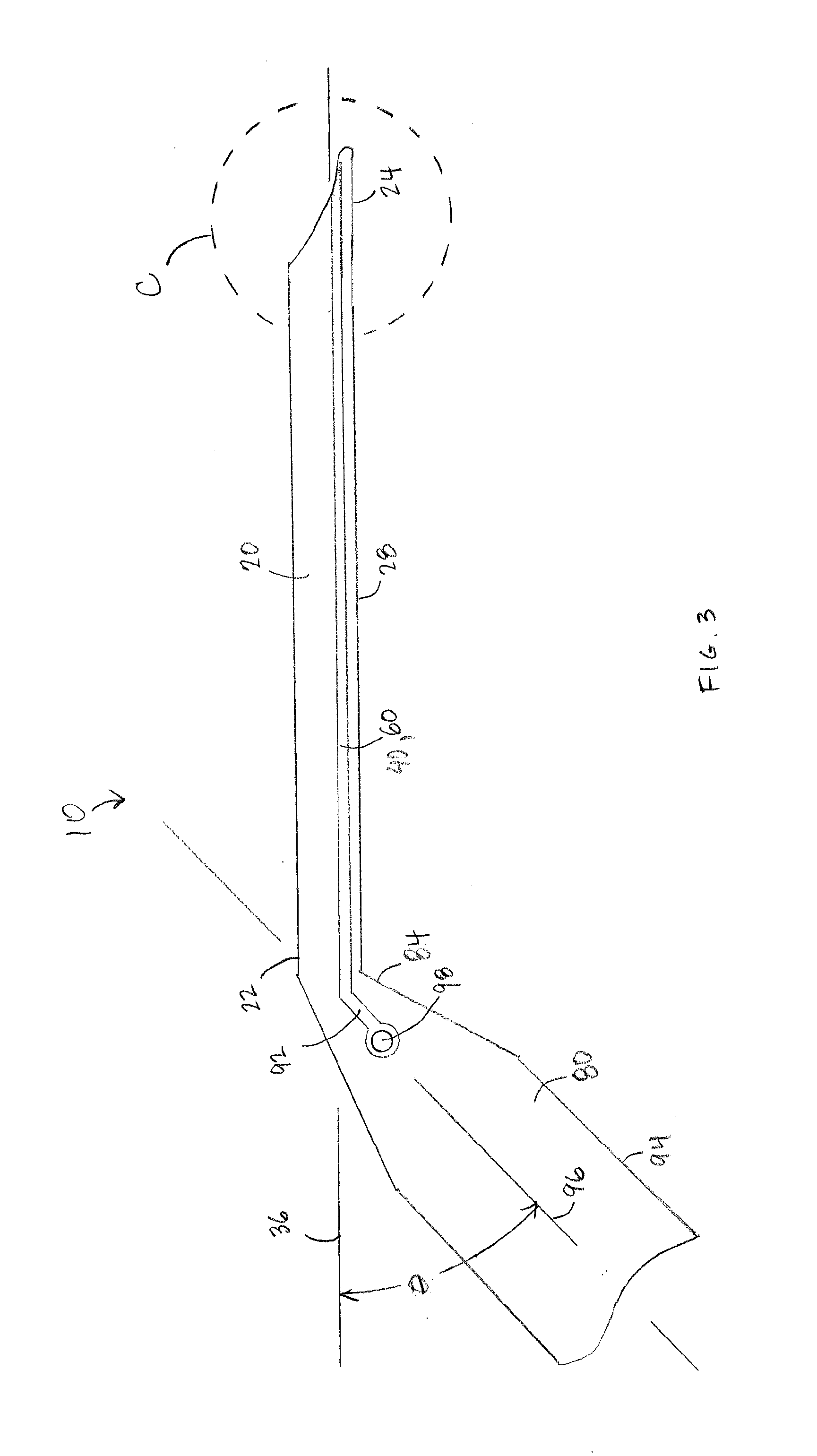Cannula
a cannula and a technology of cannulas, applied in the field of cannulas, can solve the problems of obscuring the position of limited use of conventional cylindrical cannulas, and inability to accurately place the leading tip relative to the join
- Summary
- Abstract
- Description
- Claims
- Application Information
AI Technical Summary
Benefits of technology
Problems solved by technology
Method used
Image
Examples
Embodiment Construction
[0027]A device 10 for introducing surgical tools into a body will be described with reference to the figures. In the following description, references to orientations such as upper, upward, lower, downward, etc. are made for descriptive purposes with respect to the orientation of the device shown in FIG. 1 rather than to imply any absolute relative orientation.
[0028]Referring now to FIG. 1, the device 10 includes a slotted cannula 20 supported on a handle 80. The cannula 20 is an elongate plate 21 having a first end 22 rigidly connected to an end 84 of the handle 80. Elongate plate 21 is curved in the width direction so that the cannula 20 has a cross-sectional shape that is a minor arc opening upward. As a result of this configuration, the cannula 20 includes an upward-facing, concave tool receiving surface 26, and an opposed, downward-facing, convex outer surface 28. In some embodiments, the minor arc has a circumferential arc length in a range between 20 degrees and 180 degrees.
[...
PUM
 Login to View More
Login to View More Abstract
Description
Claims
Application Information
 Login to View More
Login to View More - R&D
- Intellectual Property
- Life Sciences
- Materials
- Tech Scout
- Unparalleled Data Quality
- Higher Quality Content
- 60% Fewer Hallucinations
Browse by: Latest US Patents, China's latest patents, Technical Efficacy Thesaurus, Application Domain, Technology Topic, Popular Technical Reports.
© 2025 PatSnap. All rights reserved.Legal|Privacy policy|Modern Slavery Act Transparency Statement|Sitemap|About US| Contact US: help@patsnap.com



